…a collective choreography of banal movements…[1]
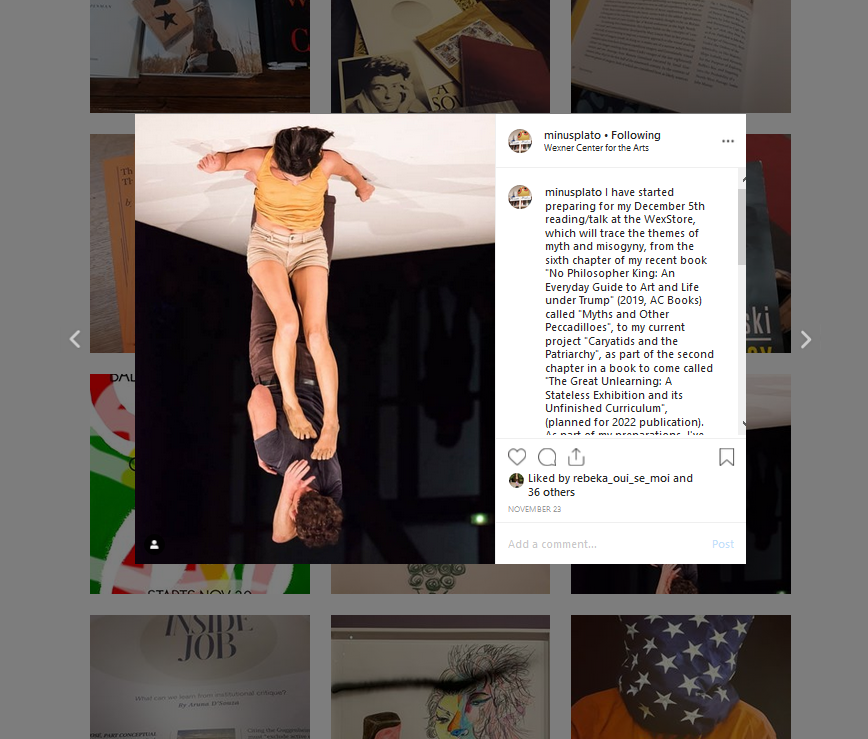
…even protesting a museum exhibition is still a form of participation…[2]
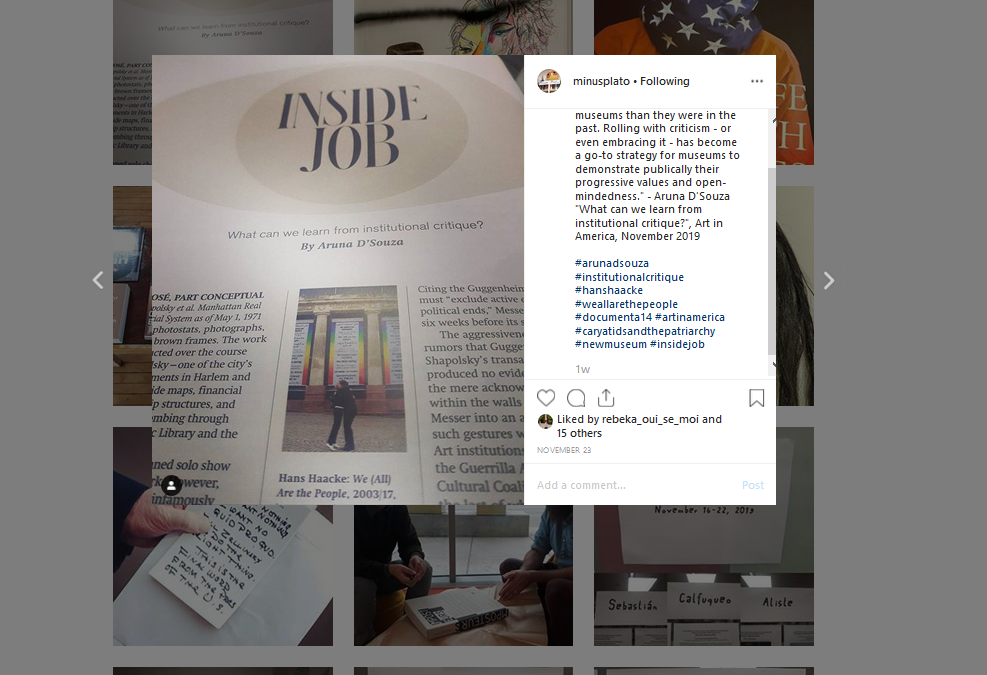
…not even if I had ten tongues and ten mouths…[3]

…a Roman would always think we…[4]
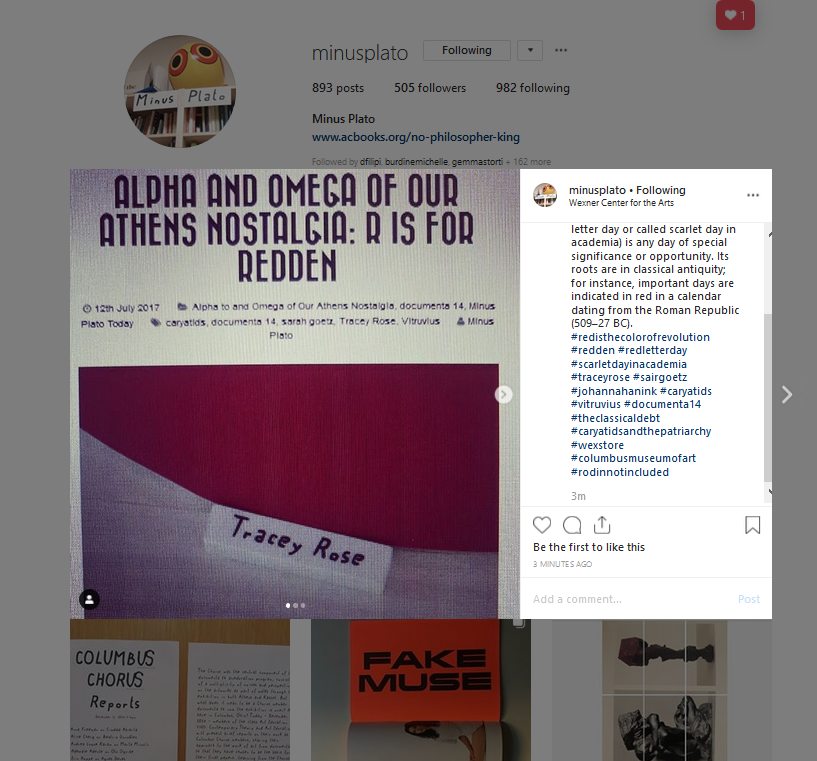
…Judith beheading Holoferenes: make art history scream…[5]
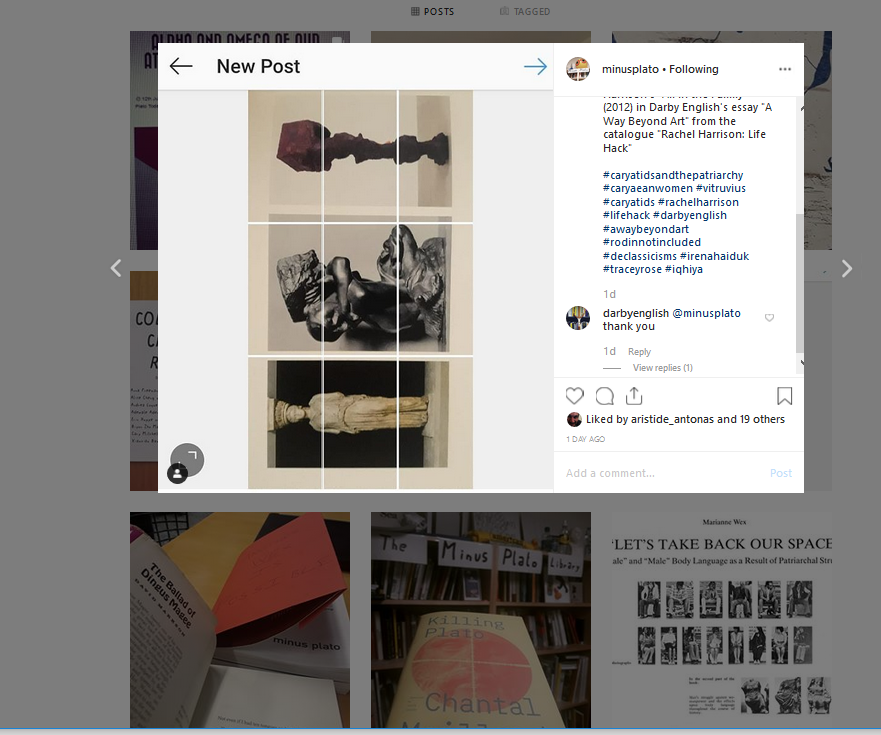
…at the Old
Library Wex’s book starts to come alive…[6]
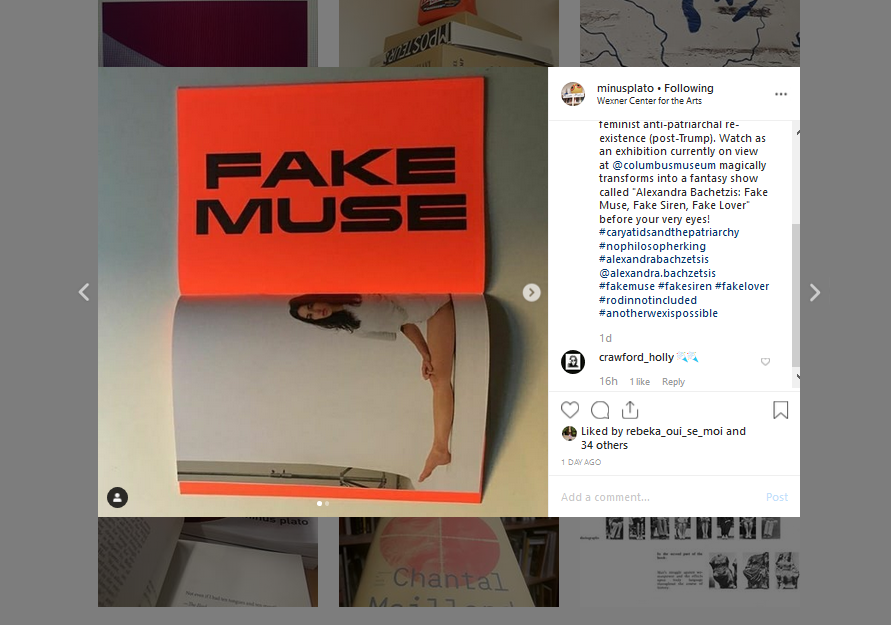
[1] Hey you, yes you, welcome to the resistance aka the footnotes. We know we’re small and hard to read, but while that grizzly Cyclops, the bearded sage on the stage, is up there droning away, you can join us down here where the real action is, on the front line of anti-fascist resistance, a real Echo and the Sirens band working together against the patriarchy. But let’s be clear: whether a Plato or a Trump, we are no man’s footnotes! We gathered together here inspired by Anna Dezeuze’s ‘Footnotes on Uchronia’, her contribution to an odd book by choreographers and artists les gens d’Uterpan who were part of documenta 14 (don’t get him up there started on d14 – he’ll never stop!) When asking if passersby would notice their “collective choreography of banal movements”, Dezeuze replies: “Such questions have also been explored by choreographer Odile Duboc with her fernands, pedestrian gestures that her dancers perform in public spaces such as streets or squares. (By turning the first name “Fernand” into a common noun, the term invented by Duboc brings together the singularity and the anonymity of the everyday.)”
[2] Duboc also made a work called Trois Boléros, with a second movement inspired by a sculpture by Camille Claudel, (who should never be reduced to a footnote in any Rodin exhibition!) While Mr Minus is up there holding forth about his Caryatids and the Patriarchy project, a social media protest against the current exhibition at the Columbus Museum of Art called Rodin: Muses, Sirens, Lovers, we wonder, does he know nothing about institutional critique? Has he forgotten what he learned from Mickaline Thomas’ transformative muses at the Wex exhibition I Can’t See You Without Me? He probably hasn’t even read Andrea Fraser’s 2005 essay ‘From the Critique of Institutions to an Institution of Critique’, recently cited by Aruna D’Souza in her article ‘Inside Job: What can we learn from institutional critique?’ in Art in America. Following Fraser, D’Souza writes: ”Art does not exist as a social concept outside its institutionalization. And so it follows that even protesting a museum exhibition is still a form of participation since the gesture takes meaning from its relation to the art world.” You can pick up a copy here in the WexStore.
[3] Speaking of which, Mr Minus sure loves the WexStore! But who doesn’t? Just look at that Guerilla Girls scarf! But why should we care how many books he buys here? We feel sorry for his partner Rebeka having to put up with his mess of boring books piled upon more boring books. We’d rather be reading Anne Boyer’s new book The Undying (it is on many of those lists for best books of the year – no sign of NPK there!). She summons old man Homer and his monotonous Iliad (war, men sulking, more war), writing how she couldn’t articulate her experience with breast cancer not even if she had ten tongues and ten mouths. Boyer writes better similes than Homer anyway! When recounting how a male friend criticized an earlier draft of the book because ‘There is only intermittently any Us’, Boyer writes: “My response to him is, at first, I can’t lie. But that itself is a lie, proof that I can lie and sometimes do. What I meant was that I can’t pretend to have felt less alone, as if swimming at the lake with my friends, then having swum past them, beyond the buoys, out in the deep where no one could come to rescue me and no one I loved had ever been.” (Do you find it somewhat soothing when we footnotes generously flow across pages, adding momentum to our writing and extending our readers’ attention in the process, even if just for a few brief seconds?)
[4] Speaking of attention, our favorite essay on the Iliad is by Simone Weil (we never know if her name is pronounced veil or vile). Weil knew that what academics calls Classics – a ridiculous shorthand for books by a group of ancient Greek and Roman men – with a few exceptions – Sappho and the Patriarchs indeed! (We love Louise Lawler!) Anyway, Weil was a thinker and a doer – she worked in a factory, fought in the Spanish Civil War, so we listen to what she has to say. She blamed the Romans and their ever-expanding empire, for turning people into things and upending their roots through imperial violence. In her notes on her unfinished tragedy Venice Saved, Weil writes: “In the first act: the idea of Empire. Social without roots, social without city: the Roman Empire. A Roman would always think we.” We are not Romans and we think another kind of we is possible.
[5] To help make this new we let’s follow Tracey Rose and her reddened caryatid at d14 in Athens via Mr Minus’ old Α-Ω dialogue with sair goetz and remember the daughters of Caryas, women enslaved and forced to parade by Greek men for colluding with the Persian enemy, a punishment that symbolically continues today through their stone sisters. Showing their suffering, as that predator Rodin did, is not enough. We need to hear their voices. Rachel Harrison’s work helps, both in her own caryatid, All in the Family, as well as in her press release of ventriloquized art objects for the exhibition Prasine (a type of leek green apparently!). In the latter, Harrison has Caravaggio’s Judith beheading Holoferenes shout “make art history scream”, appropriating Nixon’s order to the CIA to ruin the Chilean economy as part of the US campaign to end Salvador Allende’s regime (and our sister Cecilia Vicuña’s dreams), some 45 years ago. As for today, Wex director Johanna Burton writes in the catalog for Harrison’s retrospective Life Hack, “Certainly questions of what is “appropriate” have taken on a centrality in the wake of #MeToo, to say nothing of our current political regime.”
[6] But we are here (HERE) to say something; even if we are whispering it in the small print, and, for once, we are in agreement with what Mr Minus has to say (is he still speaking? Oh boy he can go on!). He once told us that the problem with the Rodin exhibition at the CMA wasn’t just the celebration of a sexual predator sculptor legitimized by misogynistic myths, but the hidden, structural violence of the Cantor Foundation refusing to change the offending title and wall-text. Sure, cultural philanthropy sounds rosy, but not when mixed with cover-ups of sexual violence, historical and contemporary. Here (HERE) you can guess we’re not just talking about the Cantor Foundation, but a moneyman closer to home. As the Wex celebrates the work of our sisters – Ann Hamilton, Jenny Holzer and Maya Lin, it continues to operate as an institution under the Cyclopean banner of a man and his name; a man who, for all his Picassos, generosity and, now, public embarrassment, bank-rolled and protected a sexual predator of the first order. So, we the footnotes, Echo and the Sirens, join forces with Minus Plato in hereby calling for the renaming of the Wex after Marianne Wex (whose father was a fully-fledged Nazi!). Perhaps the first exhibition in the new Wex could include the work of choreographer and artist Alexandra Bachzetsis (also part of d14)? We could call it Fake Muse, Fake Siren, Fake Lover! We could even reconvene the School of Gesture from the d14 aneducation program in Athens here (HERE) in Columbus! This would teach us how to free all bodies and institutions from oppressive patriarchal structures. So, say it with us together, loud and proud:
“Another Wex is possible! Another We is possible!”
This post is now framed by a newer post, found here: https://minusplato.com/2022/01/unyil-it-is-feminist-stages-on-lifes-anti-fascist-way.html